Titans: The Primordial Giants of Greek Mythology
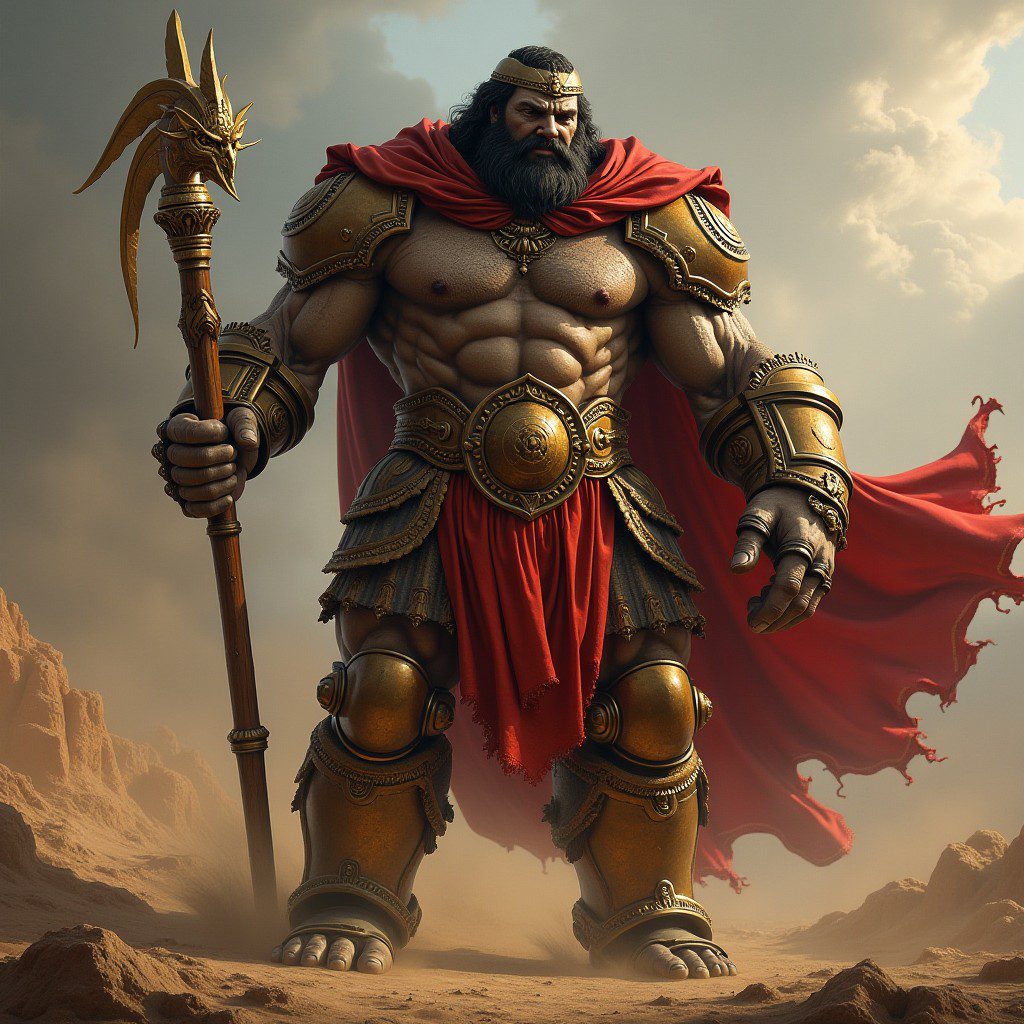
The Titans, also known as the Titanes in Greek mythology, are a race of powerful deities who predate the Olympian gods and played a central role in shaping the cosmos. These colossal beings were the children of the primordial deities Uranus (Sky) and Gaia (Earth), and they ruled the universe during the Golden Age before being overthrown by the Olympians in a cataclysmic war known as the Titanomachy.
The Titans, despite their eventual defeat, left an indelible mark on Greek mythology and became symbols of raw, ancient power. While the Olympian gods, led by Zeus, established a new order based on civilization, law, and hierarchy, the Titans represented the untamed, primordial forces that shaped the universe’s very foundation.
Origins and Cultural History of the Titans
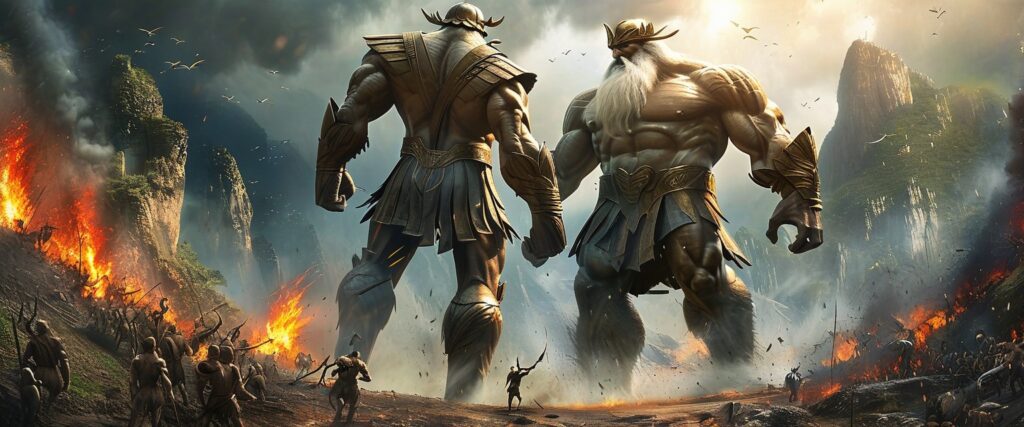
The twelve original Titans were the offspring of Uranus and Gaia, and their mythological importance lies in their connection to the early, chaotic period of the cosmos. According to Hesiod’s Theogony, the Titans were part of the second generation of divine beings, following the primordial deities like Chaos, Gaia, and Uranus. Their role was to govern the natural world before the rise of the Olympian gods.
The original twelve Titans were:
- Cronus – Leader of the Titans and god of time.
- Rhea – Cronus’ sister and wife, mother of the Olympian gods.
- Oceanus – Titan of the great river encircling the world.
- Tethys – Titaness of freshwater and the nurturing of life.
- Hyperion – Titan of light, father of the sun, moon, and dawn.
- Theia – Titaness of sight and the shining heavens.
- Coeus – Titan of intellect and the axis of heaven.
- Phoebe – Titaness of prophecy and intellect.
- Iapetus – Titan of mortality and the father of Prometheus, Epimetheus, and Atlas.
- Crius – Lesser-known Titan associated with the constellations.
- Mnemosyne – Titaness of memory and the mother of the Muses.
- Themis – Titaness of divine law and order.
These Titans ruled the cosmos during the Golden Age, a time of peace and prosperity before Zeus and the Olympians took power. While the Titans are often depicted as a more archaic, raw form of divinity, they were also key figures in establishing the natural world and governing its cycles.
The Titanomachy: War Between Titans and Olympians
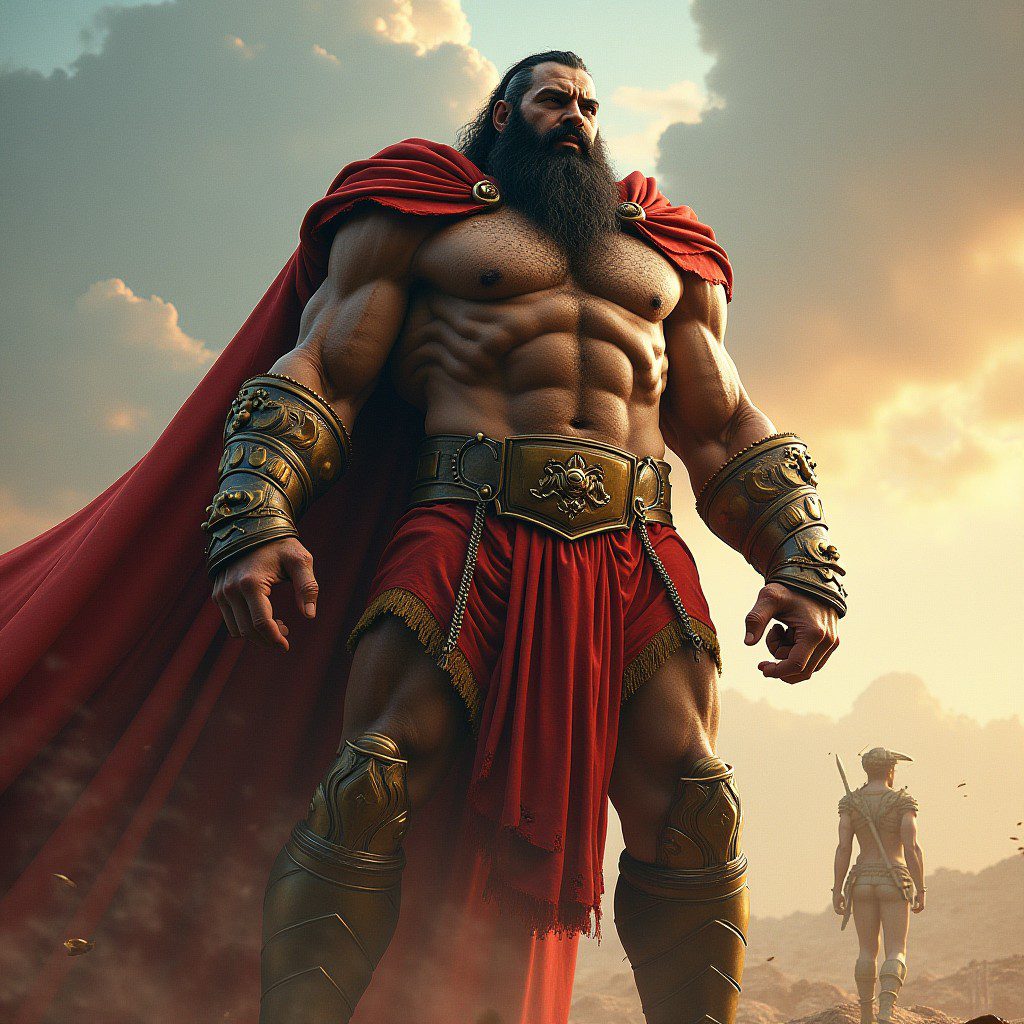
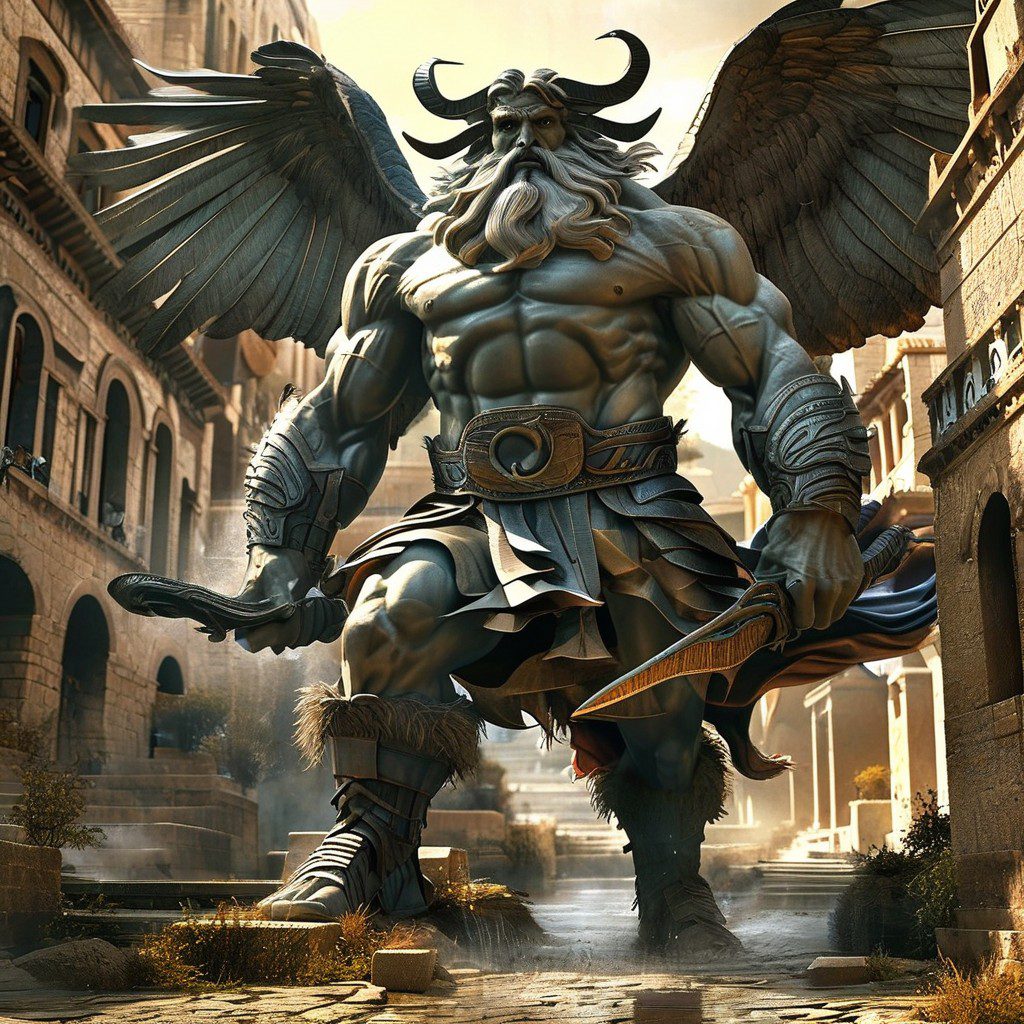
The Titanomachy is one of the most important events in Greek mythology and marks the transition of power from the old order of the Titans to the new regime of the Olympian gods. The story begins with Cronus, the youngest and most ambitious of the Titans, who overthrew his father Uranus after Gaia urged him to end Uranus’ tyrannical rule. With the help of a sickle given by Gaia, Cronus castrated Uranus and became the ruler of the cosmos.
However, Cronus feared that he too would be overthrown by his offspring, as prophesied. To prevent this, he swallowed each of his children—Hestia, Demeter, Hera, Hades, and Poseidon—immediately after they were born. His wife, Rhea, desperate to save her youngest son, Zeus, hid the infant on the island of Crete and tricked Cronus by giving him a stone wrapped in swaddling clothes, which he swallowed instead.
When Zeus grew up, he returned to confront his father, forcing Cronus to regurgitate his siblings. This marked the beginning of the Titanomachy, a decade-long war between the Olympians, led by Zeus, and the Titans, led by Cronus.
The war culminated in the defeat of the Titans, who were imprisoned in Tartarus, a deep abyss in the underworld. Some of the Titans, such as Prometheus and Epimetheus, sided with Zeus during the conflict and were spared punishment. The victory of the Olympians marked the end of the Titans’ rule and the beginning of a new era under Zeus.
Major Titans in Mythology
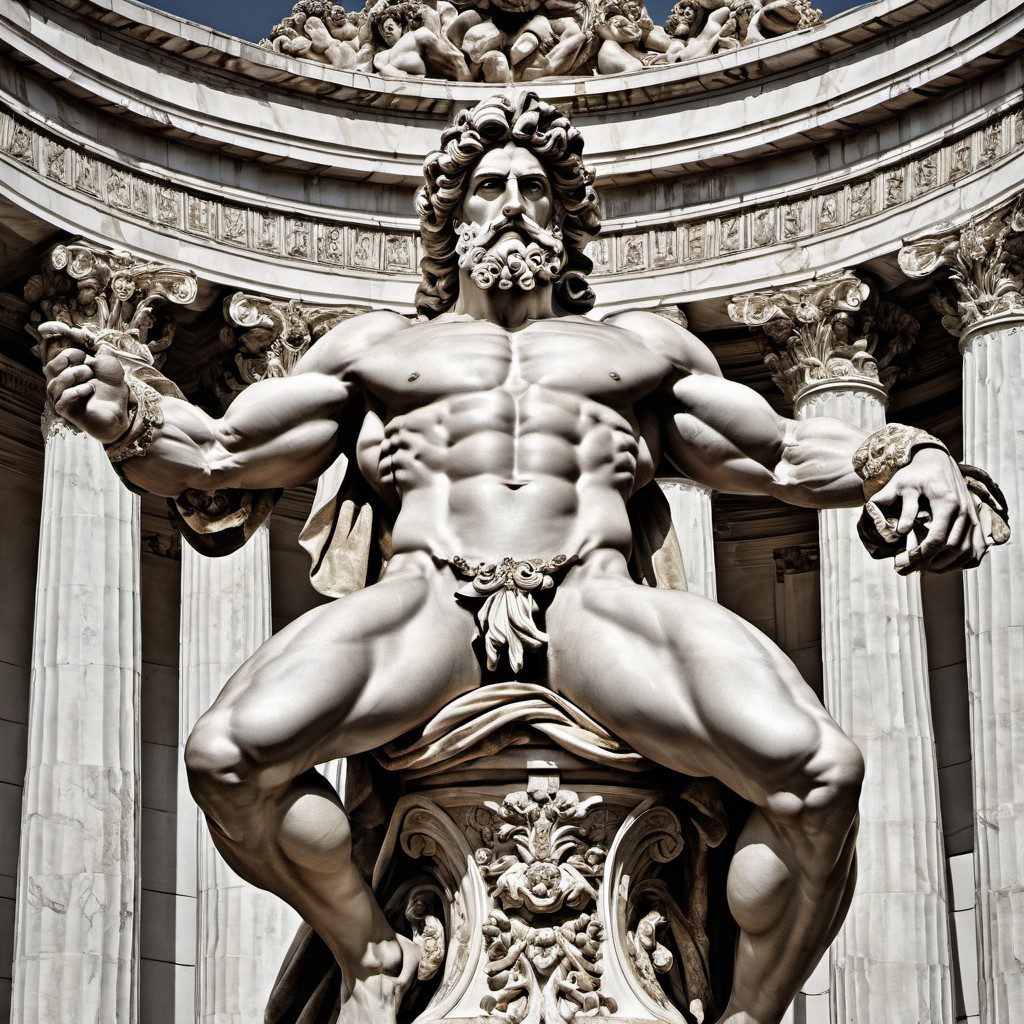
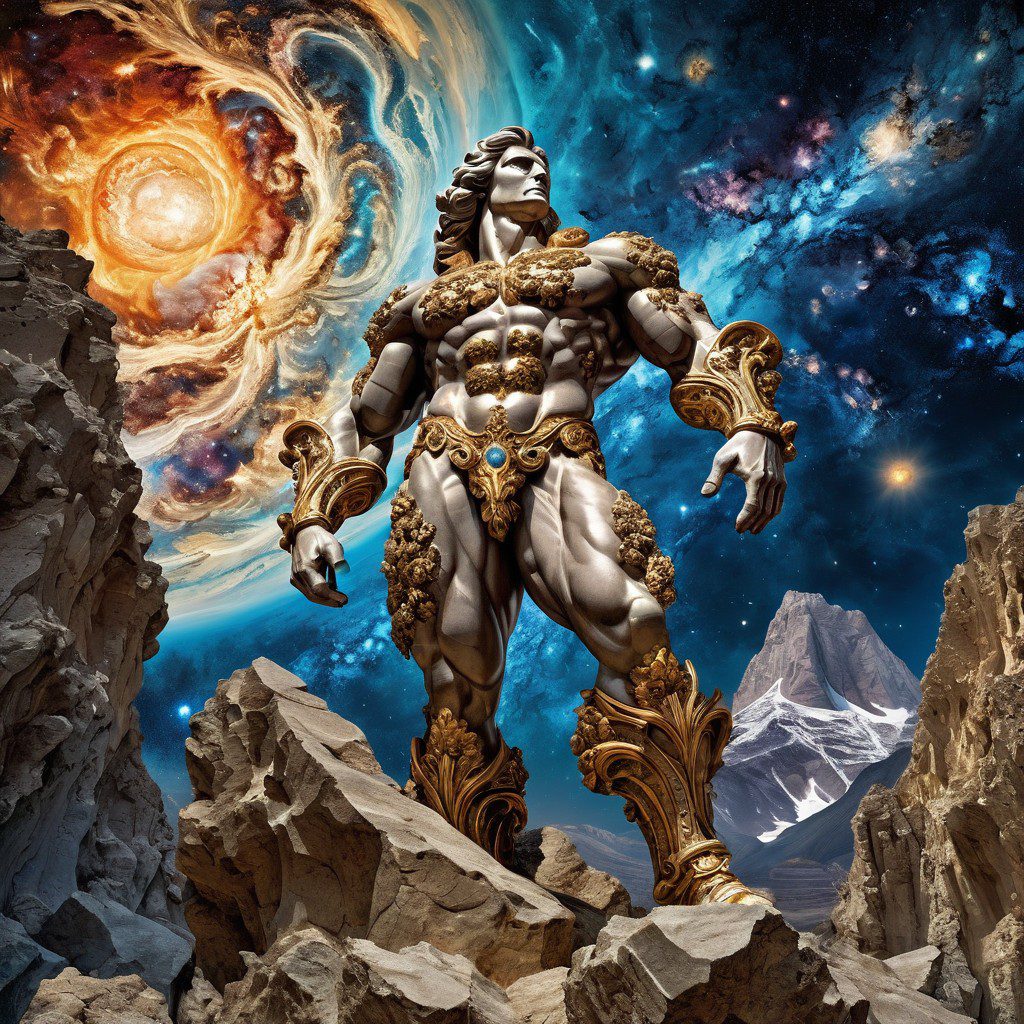
While the twelve Titans formed the core of the ancient divine order, some Titans are more prominent in mythology due to their individual stories and roles in the cosmic balance.
1. Cronus
Cronus, the youngest of the Titans, is the most important figure in the overthrow of Uranus and the subsequent rise of the Olympians. He represents time, especially its destructive and cyclical nature. After overthrowing Uranus, Cronus ruled the cosmos during the Golden Age but was eventually overthrown by his son Zeus. His fear of losing power led to his decision to swallow his children, a decision that ultimately caused his downfall.
2. Rhea
Rhea, the sister and wife of Cronus, played a crucial role in the survival of the Olympian gods. She is often depicted as a nurturing figure, closely associated with fertility and motherhood. Her decision to hide Zeus from Cronus set the stage for the rise of the Olympians and the fall of the Titans. Rhea’s influence extends into the realm of the Olympian pantheon, as she is the mother of many of the major gods.
3. Prometheus
One of the most famous Titans, Prometheus is best known for his intelligence and defiance of Zeus. He sided with the Olympians during the Titanomachy but later rebelled against Zeus by stealing fire from the gods and giving it to humanity. Prometheus is often seen as a champion of mankind, representing both creativity and rebellion. His punishment for this act—being chained to a rock where an eagle would eat his liver daily—underscores the themes of suffering and defiance in Greek myth.
4. Atlas
Atlas, another son of Iapetus, was condemned to hold up the sky for eternity after the Titans’ defeat. His punishment symbolizes the weight of the universe and the burden of defying the Olympian order. In later mythology, Atlas was often depicted as a stoic figure carrying the celestial sphere on his shoulders, representing endurance and strength.
5. Oceanus and Tethys
Oceanus and Tethys represent the primal forces of water, particularly the great river that encircles the earth in Greek cosmology. They were not directly involved in the Titanomachy and remained neutral during the conflict. Oceanus is often depicted as a bearded, serpentine figure, while Tethys is associated with the nurturing waters that sustain life. Together, they parented the river gods (Potamoi) and the Oceanids, nymphs who presided over the rivers and springs of the world.
6. Mnemosyne
The Titaness of memory, Mnemosyne, plays an important role in Greek mythology as the mother of the nine Muses, the goddesses of the arts, inspiration, and knowledge. She represents the preservation of knowledge and the continuity of history through memory, making her a central figure in the intellectual and creative life of both gods and mortals.
7. Themis
Themis, the Titaness of divine law, justice, and order, represents the unchangeable natural laws that govern the universe. She is often associated with the concept of dike (justice) and served as a counselor to Zeus, helping maintain order in both the divine and mortal realms. Themis is depicted as a wise and impartial goddess, often seen holding scales or a cornucopia.
Strengths and Weaknesses of the Titans
Strengths:
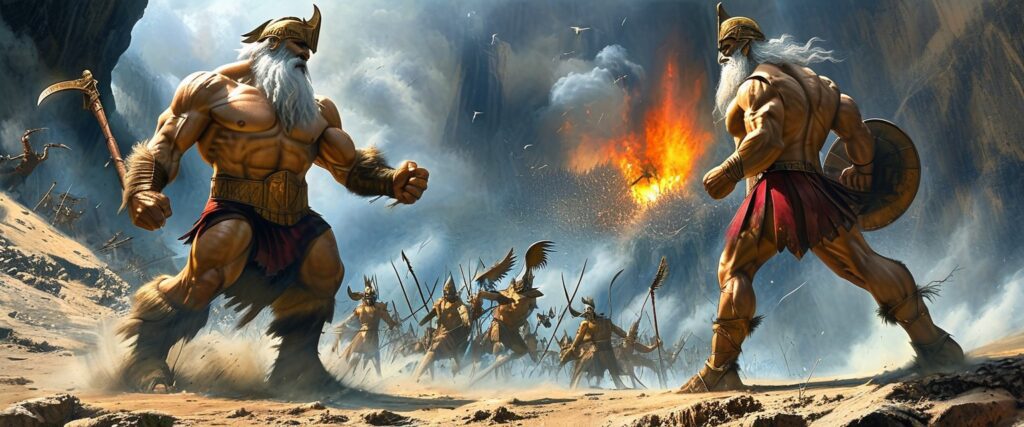
- Primordial Power: As the second generation of deities, the Titans were immensely powerful and connected to elemental forces such as time, water, and memory. They represented the raw, untamed forces of the universe before the Olympians brought order.
- Creators and Sustainers of Life: The Titans, especially figures like Oceanus, Tethys, and Rhea, were deeply connected to life-giving elements, such as water and fertility, making them crucial to the sustenance of both gods and mortals.
- Enduring Legacy: Despite their defeat, the Titans’ legacy continued through their children, the Olympians, and in the natural order of the world they helped establish. Figures like Prometheus and Atlas remain central in mythology, symbolizing defiance and endurance.
Weaknesses:
- Overthrown by Their Own Children: The Titans’ downfall came from their inability to maintain power and adapt to the rise of the Olympians. Their fear of change and of their offspring led to their eventual defeat in the Titanomachy.
- Tied to the Old Order: As representatives of the old, primordial forces, the Titans were often seen as rigid and incapable of evolving, which contributed to their downfall. The Olympians, with their emphasis on order, civilization, and human affairs, marked a new era of divine rule.
- Punishment and Imprisonment: Many Titans, including Cronus, Atlas, and the others who opposed Zeus, were harshly punished after their defeat. They were either imprisoned in Tartarus or condemned to eternal suffering, symbolizing the consequences of their resistance to the new divine order.
The Titans in Modern Media
The Titans have remained central figures in modern adaptations of Greek mythology, often appearing as powerful, ancient beings in literature, film, and video games.
- Literature: In works like Rick Riordan’s Percy Jackson series, the Titans are depicted as ancient adversaries who seek to overthrow the Olympian gods once again. Characters like Kronos (Cronus) and Prometheus play key roles in the series, representing the ongoing struggle between the old and new orders.
- Film and TV: The Titans appear in numerous films and television series inspired by Greek mythology, including Clash of the Titans (1981, 2010) and Wrath of the Titans (2012), where they are portrayed as ancient, powerful forces that threaten both gods and humans.
- Video Games: In games like God of War and Hades, the Titans play pivotal roles as antagonists or mythological figures. God of War presents the Titans as powerful, ancient beings at odds with the Olympians, while Hades includes figures like Prometheus and Atlas in its mythologically rich world.
The Titans: Symbols of Primal Power and Cosmic Change
The Titans represent a vital chapter in the Greek mythological canon, embodying the untamed, primordial forces that shaped the cosmos before the Olympian gods brought order. Though they were eventually overthrown, their influence persists, symbolizing the cyclical nature of power and the tension between chaos and order.
In modern interpretations, the Titans continue to fascinate as symbols of rebellion, strength, and ancient wisdom. Whether as cosmic villains or tragic figures, their stories reflect the enduring struggle between the old and new, chaos and order, and the inevitability of change in both divine and mortal realms.
